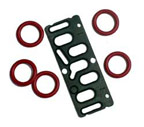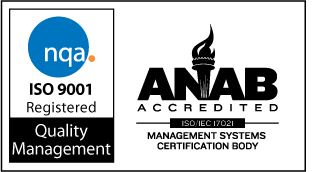
|
7108
S. Alton Way, Unit I |
(303) 758-2728
Home > Tips > FEP/PFA Encapsulated O-ring Part 2
|
Tip: FEP/PFA Encapsulated O-ring Part 2
Keep in mind that just as the outer jacket of FEP or PFA in the FEP/PFA encapsulated o-ring brings certain advantages to the o-ring, the inner elastomer core also brings its own desirable characteristics. That doubles the advantages you can get from this one o-ring. Here at PSP we find that most of our customers prefer a Viton® core. Because of the low compression set of Viton®, it is a good fit for most applications. If the application requires extremely high or low temperatures then another elastomer needs to be chosen. An encapsulated o-ring with silicone as the core works very well for a very low temperature applications. If low loading is also a requirement, then a hollow core can be used, it compresses easier than a solid silicone core. In spite of the fact that FEP/PFA encapsulated o-rings offer so many advantages, there are times when you would not want to use them. Abrasion
Dynamic Situations Collapsing Stretching Please call us if you need help in choosing a FEP/PFA encapsulated o-ring for your application. Our engineers are happy to talk about all the details of your application so you can make a wise choice.
|
We are located in the Denver Technological
Center in a suburb of Denver, Colorado
©1997-2017, Problem Solving Products, Inc.
Website Map | Privacy Statement
| Terms of Use

